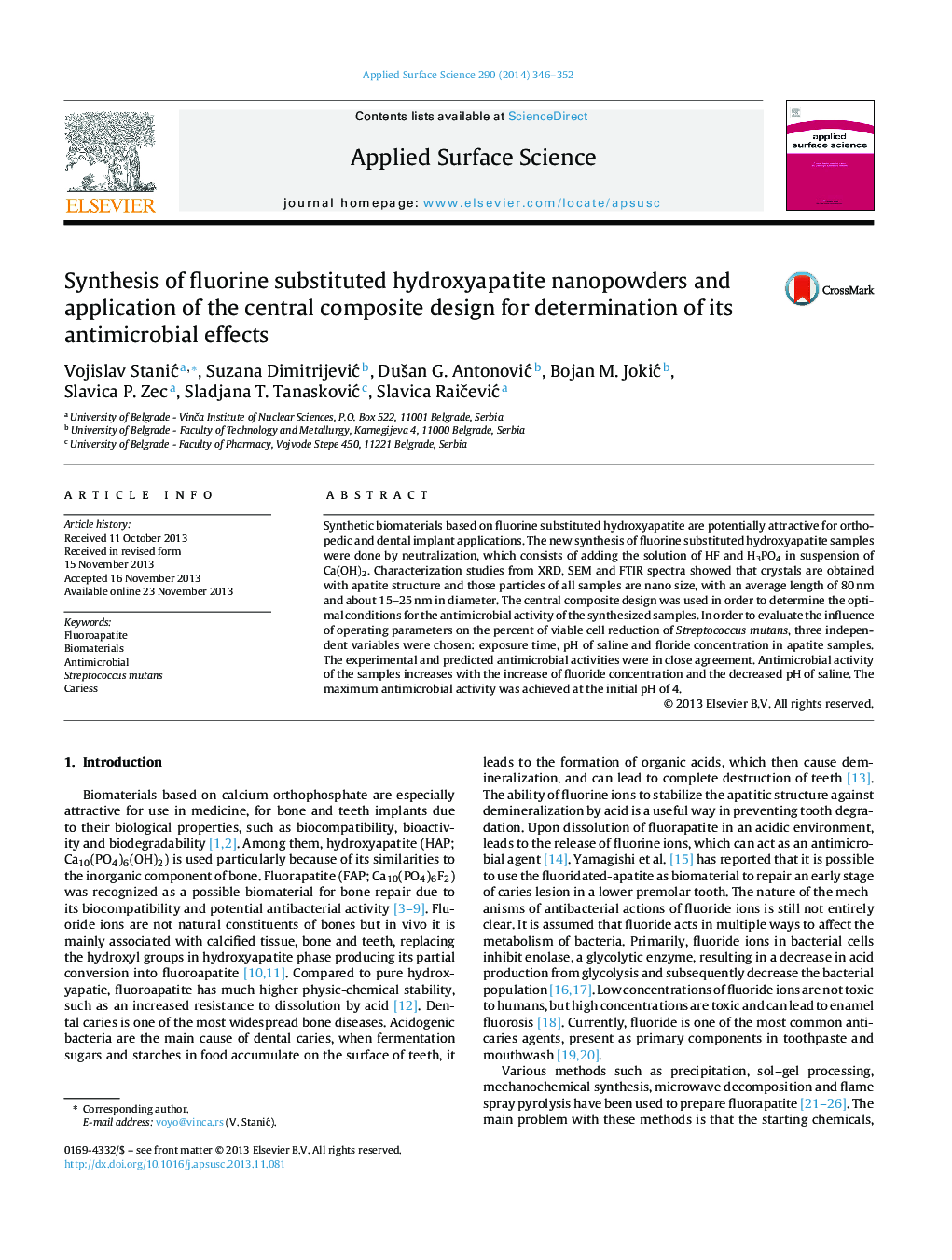| Article ID | Journal | Published Year | Pages | File Type |
|---|---|---|---|---|
| 5359925 | Applied Surface Science | 2014 | 7 Pages |
Abstract
Synthetic biomaterials based on fluorine substituted hydroxyapatite are potentially attractive for orthopedic and dental implant applications. The new synthesis of fluorine substituted hydroxyapatite samples were done by neutralization, which consists of adding the solution of HF and H3PO4 in suspension of Ca(OH)2. Characterization studies from XRD, SEM and FTIR spectra showed that crystals are obtained with apatite structure and those particles of all samples are nano size, with an average length of 80Â nm and about 15-25Â nm in diameter. The central composite design was used in order to determine the optimal conditions for the antimicrobial activity of the synthesized samples. In order to evaluate the influence of operating parameters on the percent of viable cell reduction of Streptococcus mutans, three independent variables were chosen: exposure time, pH of saline and floride concentration in apatite samples. The experimental and predicted antimicrobial activities were in close agreement. Antimicrobial activity of the samples increases with the increase of fluoride concentration and the decreased pH of saline. The maximum antimicrobial activity was achieved at the initial pH of 4.
Related Topics
Physical Sciences and Engineering
Chemistry
Physical and Theoretical Chemistry
Authors
Vojislav StaniÄ, Suzana DimitrijeviÄ, DuÅ¡an G. AntonoviÄ, Bojan M. JokiÄ, Slavica P. Zec, Sladjana T. TanaskoviÄ, Slavica RaiÄeviÄ,
